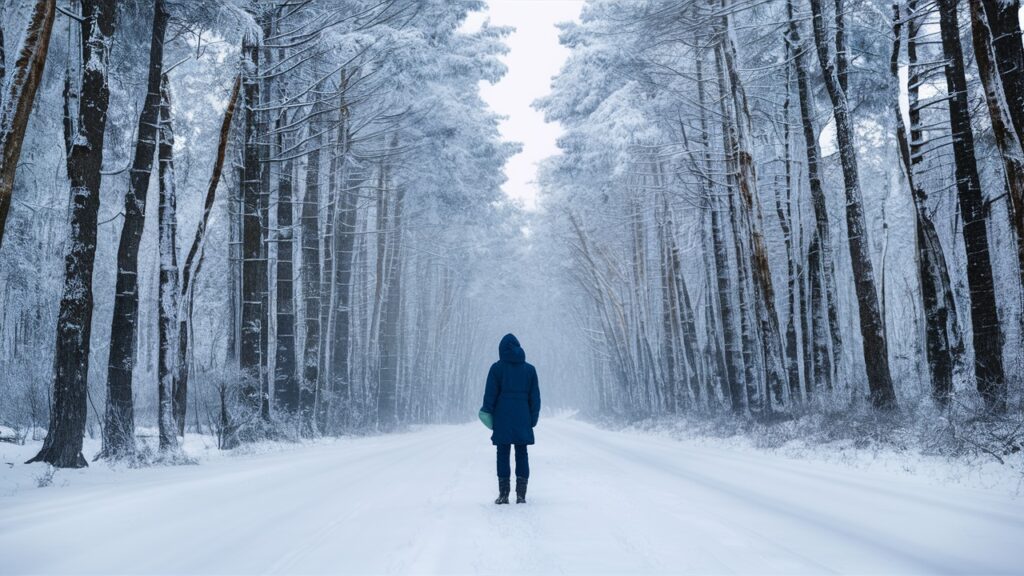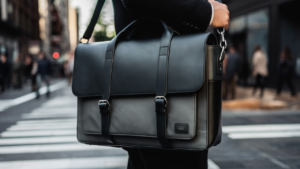To prepare for extreme cold weather, ensure you have proper clothing, including insulated layers and waterproof gear. Stock up on essential supplies like food, water, and heating sources.
Extreme cold weather can pose serious risks to health and safety. Preparing well in advance can make a significant difference. Understanding how to protect yourself and your home is crucial. Proper clothing can prevent frostbite and hypothermia. Supplies such as food, water, and medications should be readily available.
Home safety measures, like insulating pipes and checking heating systems, are vital. Knowledge of emergency contacts and local resources can provide peace of mind. Being proactive ensures you and your loved ones stay safe and warm during harsh winter conditions. Stay informed and ready to face the cold effectively.
Introduction To Cold Weather Preparation
Preparing for extreme cold weather is essential for safety. Cold temperatures can lead to serious health risks. Proper planning helps protect you and your loved ones. Understanding the risks and how to prepare is key.
The Importance Of Planning Ahead
Planning ahead can save lives. Here are some reasons to prepare:
- Health Safety: Cold weather can cause frostbite and hypothermia.
- Property Protection: Cold can damage your home and belongings.
- Emergency Readiness: Be prepared for power outages and snowstorms.
- Peace of Mind: Knowing you are ready reduces anxiety.
Understanding Cold Weather Risks
Cold weather presents various risks. Being aware helps you stay safe. Here are some common risks:
| Risk | Description |
|---|---|
| Frostbite | Skin freezes, usually on fingers and toes. |
| Hypothermia | Body loses heat faster than it can produce. |
| Carbon Monoxide Poisoning | Improper use of heaters can cause gas buildup. |
| Slips and Falls | Ice can make surfaces very slippery. |
Recognizing these risks helps you take action. Stay informed about the weather. Check forecasts regularly.
Insulating Your Home
Preparing for extreme cold weather requires effective home insulation. Proper insulation keeps your home warm. It also saves energy and reduces heating costs. Here are two key methods to insulate your home effectively.
Sealing Drafts And Leaks
Drafts and leaks can make your home feel cold. Seal them to improve warmth. Here are some areas to check:
- Windows
- Doors
- Attics
- Basements
- Pipes and vents
Use these materials to seal drafts:
| Material | Use |
|---|---|
| Weather Stripping | Doors and windows |
| Caulk | Holes and gaps |
| Draft Stoppers | Bottom of doors |
Check for drafts during cold days. Feel for cold air with your hand. Seal any openings you find.
Installing Thermal Curtains
Thermal curtains block cold air. They also trap heat inside your home. Use these steps to install them:
- Choose curtains with a thermal lining.
- Measure your windows for the right size.
- Install curtain rods above the window frame.
- Hang curtains so they touch the floor.
Close thermal curtains at night. Open them during sunny days for warmth. This simple step keeps your home cozy.
Heating Essentials
Preparing for extreme cold weather requires the right heating solutions. Proper heating keeps you warm and safe. Understanding your options makes a big difference.
Choosing The Right Heating System
Selecting the best heating system depends on your needs. Consider these popular options:
- Furnaces: Efficient for large spaces.
- Heat Pumps: Useful for moderate climates.
- Space Heaters: Ideal for small areas.
- Radiant Floor Heating: Provides even warmth.
Evaluate energy efficiency ratings. Look for systems with high AFUE (Annual Fuel Utilization Efficiency) scores. A higher score means better efficiency.
Maintenance And Safety Checks
Regular maintenance ensures your heating system works well. Follow these simple steps:
- Change air filters every month.
- Inspect heating vents for blockages.
- Schedule professional inspections annually.
Safety checks are crucial. Pay attention to:
- Carbon monoxide detectors. Test them regularly.
- Gas lines for leaks. Call a professional if you smell gas.
- Flues and chimneys. Keep them clean and clear.
Stay warm and safe this winter. A little preparation goes a long way.
Emergency Power Solutions
Extreme cold weather can cause power outages. Preparing for these situations is crucial. Emergency power solutions help keep homes warm and safe.
Backup Generators
Backup generators provide electricity during outages. They come in various sizes and types.
- Portable Generators: Easy to move and set up.
- Standby Generators: Automatically turn on during outages.
- Solar Generators: Use solar panels for power, eco-friendly.
Consider the following factors before purchasing a generator:
| Factor | Description |
|---|---|
| Power Needs | Calculate total wattage for essential appliances. |
| Fuel Type | Choose between gas, propane, or diesel. |
| Run Time | Check how long the generator runs on one tank. |
Alternative Heating Options
Heating options can keep homes warm without traditional power. Here are some effective choices:
- Wood Stoves: Use wood logs for heat, requires space.
- Propane Heaters: Portable and efficient for small areas.
- Kerosen Heaters: Good for emergency heating, needs ventilation.
Always follow safety guidelines:
- Ensure proper ventilation.
- Keep flammable materials away.
- Use carbon monoxide detectors.
Personal Protection Gear
Extreme cold weather demands proper gear to keep you safe. Personal protection gear plays a vital role in maintaining warmth. It protects against frostbite and hypothermia. Choose the right clothing to enjoy outdoor activities.
Layering For Optimal Warmth
Layering is essential for staying warm in severe cold. Each layer has a purpose. A proper layering system includes:
- Base Layer: Wicks moisture away from the skin.
- Middle Layer: Insulates and retains heat.
- Outer Layer: Shields against wind and moisture.
Choose materials wisely. Look for:
- Moisture-wicking fabrics for the base layer.
- Insulating fleece or down for the middle layer.
- Waterproof and windproof materials for the outer layer.
Essential Cold-weather Clothing
Invest in quality cold-weather clothing. Key items include:
| Clothing Item | Purpose |
|---|---|
| Insulated Jacket | Provides warmth and protection from wind. |
| Thermal Pants | Keeps legs warm and insulated. |
| Warm Hat | Prevents heat loss from the head. |
| Gloves or Mittens | Keeps hands warm and functional. |
| Warm Socks | Protects feet from cold and moisture. |
| Winter Boots | Provides insulation and traction on snow. |
Choose layers that fit well. Avoid tight clothing, which can restrict blood flow. Keep your body moving to generate warmth.

Health Considerations
Extreme cold weather can harm your health. It’s vital to understand the risks. Proper precautions can help you stay safe.
Preventing Hypothermia And Frostbite
Hypothermia and frostbite are serious risks in extreme cold. Recognizing their signs is crucial.
- Hypothermia occurs when body temperature drops too low.
- Frostbite damages skin and underlying tissues.
Signs of Hypothermia:
- Shivering
- Confusion
- Weak pulse
- Fatigue
Signs of Frostbite:
- Pale or waxy skin
- Cold to the touch
- Stinging or aching
Wear layered clothing to trap heat. Use windproof and waterproof outer layers. Keep hands and feet warm with gloves and thick socks.
Staying Hydrated And Nourished
Staying hydrated is important in cold weather. Dehydration can still occur even in winter.
| Drink Options | Benefits |
|---|---|
| Water | Essential for hydration. |
| Hot Tea | Provides warmth and hydration. |
| Soup | Warm, nourishing, and hydrating. |
Eat hearty meals that provide energy. Foods rich in carbohydrates and fats are ideal. Here are some options:
- Oatmeal
- Whole grain bread
- Nuts and seeds
Monitor your body’s needs. Drink fluids regularly, even if you don’t feel thirsty. Eating well helps maintain body heat.
Navigating Transportation Challenges
Extreme cold weather creates many challenges for travelers. Roads can become icy and vehicles may not function properly. Preparing your transportation is essential for safety. Follow these tips to stay safe on the road.
Winterizing Vehicles
Winterizing your vehicle helps prevent breakdowns. Here’s how to prepare:
- Check the battery: Cold weather reduces battery power. Replace old batteries.
- Inspect tires: Use winter tires for better grip. Check tire pressure regularly.
- Fluids: Use winter-grade oil. Keep antifreeze levels topped up.
- Wipers: Install winter wiper blades. Ensure your windshield washer fluid is antifreeze-ready.
- Emergency kit: Include blankets, food, and water.
Safe Driving Practices
Driving in extreme cold requires extra caution. Follow these safe driving practices:
- Reduce speed: Slow down on icy roads.
- Increase following distance: Leave more space between vehicles.
- Avoid sudden movements: Make gradual turns and stops.
- Use headlights: Turn on your lights even during the day.
- Stay alert: Watch for black ice and other hazards.
| Tip | Description |
|---|---|
| Plan routes | Avoid remote areas without cell service. |
| Check weather | Stay updated on weather conditions. |
| Communicate | Tell someone your travel plans. |
Creating An Emergency Kit
Preparing for extreme cold weather involves having a well-stocked emergency kit. This kit can be a lifesaver during unexpected situations. It should contain essential items to keep you warm, safe, and informed.
Key Items To Include
Your emergency kit should include:
- Warm clothing: Include hats, gloves, and thermal socks.
- Blankets: Use thermal or wool blankets for warmth.
- Food supplies: Non-perishable items like canned goods and energy bars.
- Water: Store at least one gallon per person per day.
- Flashlight: Use a battery-operated flashlight for visibility.
- First aid kit: Include bandages, antiseptic, and necessary medications.
- Portable phone charger: Keep your devices charged during emergencies.
Maintaining Your Kit
Regular maintenance keeps your emergency kit ready for use. Check your kit every six months. Replace expired food and medications. Ensure batteries in flashlights are fresh.
| Item | Check Frequency | Action |
|---|---|---|
| Food Supplies | Every 6 months | Replace expired items |
| Medications | Every 6 months | Replace expired medications |
| Water | Every 6 months | Rotate and refill |
| Flashlight Batteries | Every 3 months | Replace with fresh batteries |
Store your emergency kit in a cool, dry place. Make sure everyone in your household knows where it is. Regular checks will ensure you are prepared for extreme cold weather.
Community And Neighbor Support
Preparing for extreme cold weather involves more than individual efforts. Strong community ties can make a big difference. Neighbors helping each other can save lives and keep everyone safe.
Building A Support Network
Creating a support network is essential. Here are some key steps:
- Communicate with neighbors regularly.
- Organize meetings to discuss cold weather plans.
- Share contact information for emergencies.
- Form groups for mutual assistance.
Consider using social media or community boards. Encourage everyone to check in with each other. A simple text can show you care.
Helping Vulnerable Populations
Some people need extra help during cold weather. Focus on these groups:
| Group | Support Needed |
|---|---|
| The elderly | Heating assistance, companionship |
| Low-income families | Food, warm clothing, shelter |
| People with disabilities | Transportation, home visits |
Organize community drives for supplies. Collect warm clothes and blankets. Offer to shovel snow for those who can’t.
By working together, communities can ensure everyone stays safe during extreme cold. Together, we can face any challenge.
Staying Informed
Staying informed during extreme cold weather is crucial. Knowledge helps you prepare and stay safe. Weather conditions can change rapidly. Being aware of these changes is important for your safety.
Weather Alerts And Warnings
Weather alerts and warnings keep you updated. They inform you about dangerous conditions. Here are some key alerts to watch for:
- Winter Storm Warning: Heavy snow or ice expected.
- Wind Chill Advisory: Dangerous wind chills possible.
- Frostbite Warning: Risk of frostbite in exposed skin.
Check alerts regularly. Local news stations often broadcast updates. Smartphones can receive push notifications too. Don’t ignore these warnings. They provide vital information.
Reliable Sources Of Information
Using reliable sources helps you stay informed. Trustworthy sources include:
| Source | Description |
|---|---|
| National Weather Service | Official updates and forecasts. |
| Local News Stations | Local weather reports and updates. |
| Weather Apps | Real-time alerts on your phone. |
| Social Media | Follow local weather accounts for updates. |
Check these sources often. They provide accurate and timely information. Stay prepared and keep your loved ones safe.
Frequently Asked Questions
How Can I Stay Warm In Extreme Cold?
To stay warm in extreme cold, dress in layers. Use thermal underwear, insulated jackets, and waterproof outer layers. Keep your extremities covered with hats, gloves, and warm socks. Additionally, stay dry and limit time spent outside. Staying active can also help generate body heat.
What Should I Pack For Cold Weather?
When packing for cold weather, include insulated clothing, thermal socks, and waterproof boots. Don’t forget accessories like gloves, scarves, and hats. Also, pack emergency items like a first aid kit, snacks, and a portable phone charger. Ensure you have extra blankets for warmth if needed.
How Do I Prepare My Home For Winter?
To prepare your home for winter, insulate windows and doors to prevent drafts. Check your heating system for efficiency and consider having it serviced. Keep a supply of emergency essentials, such as food, water, and batteries. Ensure your smoke detectors and carbon monoxide alarms are functioning properly.
What Are The Dangers Of Extreme Cold?
Extreme cold poses several dangers, including frostbite and hypothermia. Frostbite can occur on exposed skin, leading to tissue damage. Hypothermia occurs when body temperature drops dangerously low. Be aware of signs like shivering, confusion, and extreme fatigue. Take precautions to avoid these serious conditions.
Conclusion
Preparing for extreme cold weather is essential for safety and comfort. Take time to gather supplies and check your gear. Stay informed about weather updates and local advisories. With proper planning, you can face harsh conditions confidently. Stay warm, stay safe, and enjoy the beauty of winter responsibly.








